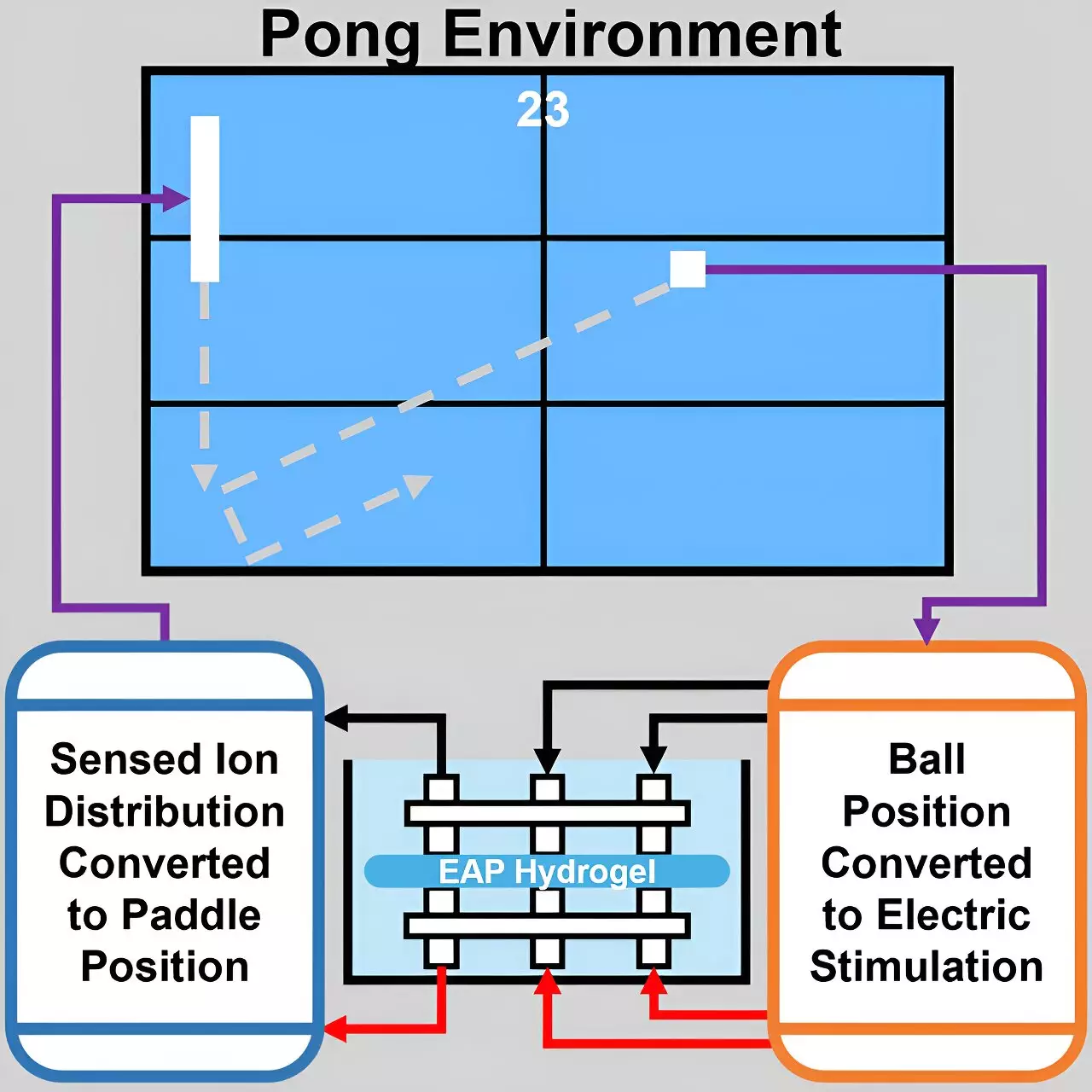Recent innovations have brought materials science into an exciting realm of research where even simple materials can demonstrate complex behaviors. A groundbreaking study published in *Cell Reports Physical Science* on August 22 reveals how hydrogels, typically recognized for their soft and flexible properties, possess the capacity to “learn” through interaction with a computer simulation of the classic game Pong. Spearheaded by Dr. Yoshikatsu Hayashi, a biomedical engineer from the University of Reading, this research suggests that the principles of learning and adaptation found in biological systems may extend beyond traditional AI frameworks.
At the heart of this remarkable discovery is the hydrogel’s unique ability to interact with a custom-built multi-electrode array, enabling it to engage with a computer model of Pong. The hydrogel exhibited an evolving performance over time, showcasing a form of ‘memory’ reliant on the movement of charged particles within its structure when stimulated electrically. According to Vincent Strong, the study’s lead author and robotics engineer, “Ionic hydrogels can achieve the same kind of memory mechanics as more complex neural networks.” This suggests that these simple materials could revolutionize the way we think about artificial intelligence by providing a novel approach to computation and learning.
Dr. Hayashi underscores the significance of these findings, stating, “Our research shows that even very simple materials can exhibit complex, adaptive behaviors typically associated with living systems or sophisticated AI.” By shedding light on the connections between material properties and learning capabilities, this research positions hydrogels as potential candidates for future smart material applications.
Inspirations from Neuroscience
This innovative research drew inspiration from earlier studies in neuroscience, which established that even brain cells in controlled environments could learn to play Pong when provided with appropriate feedback through electrical stimulation. The connection made by the researchers indicates that both hydrogels and neural cells utilize ion migrations to create memory structures, albeit in different contexts. Dr. Hayashi’s research effectively raises critical questions about the viability of artificial systems mimicking biological computational processes.
By investigating the feedback loops present in hydrogels, the research team aims to offer insights into broader scientific phenomena such as sensory-motor correlations, with implications for how we explore machine learning and intelligence.
In a complementary study published in the *Proceedings of the National Academy of Sciences*, Dr. Hayashi’s group, including notable colleagues Dr. Zuowei Wang and Dr. Nandini Vasudevan, successfully demonstrated that a different type of hydrogel could synchronize its oscillation with an external pacemaker. This accomplishment marks a major milestone, as it is the first instance where a non-living material has exhibited such rhythmic responses, previously attributed mainly to biological entities.
The researchers ascertained that by applying cyclic compressions to the gel, they could induce its chemical oscillations to align with mechanical rhythms. Crucially, the gel retained this rhythmic “memory” even after the external influence ceased. These discoveries have vital implications for understanding cardiac arrhythmias—a condition that disrupts the heart’s normal rhythm and affects millions.
Dr. Tunde Geher-Herczegh, the lead author of the cardiac research study, articulated that this work could enhance our comprehension of how to address arrhythmias and may lead to new treatment paths. She believes that by investigating mechanical systems independent of biochemical interactions, researchers can gain better insights into the complexities of heart function.
Broader Implications for Science and Industry
These innovative studies are situated at the confluence of neuroscience, physics, materials science, and cardiac research, suggesting that the underlying principles governing learning and adaptation may be universally applicable. This realization could foster advancements across multiple fields, including soft robotics, prosthetics, environmental sensing, and the development of adaptive materials.
As researchers continue to delve into the memory mechanisms underlying hydrogels, the potential applications could lead to the creation of alternative laboratory models. Such developments may transform the landscape of cardiac research and significantly reduce the reliance on animal testing for medical studies.
These pioneering studies indicate a shift towards recognizing materials like hydrogels as more than just passive substances; they are entities capable of learning and adapting. As researchers further explore these capabilities, the future promises to unveil a host of real-world applications where intelligent materials could play transformative roles, redefining interactions between human-made systems and biological processes. The implications of this research are immense, heralding a new era in both materials science and beyond.


Leave a Reply